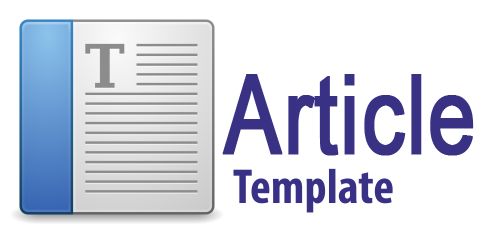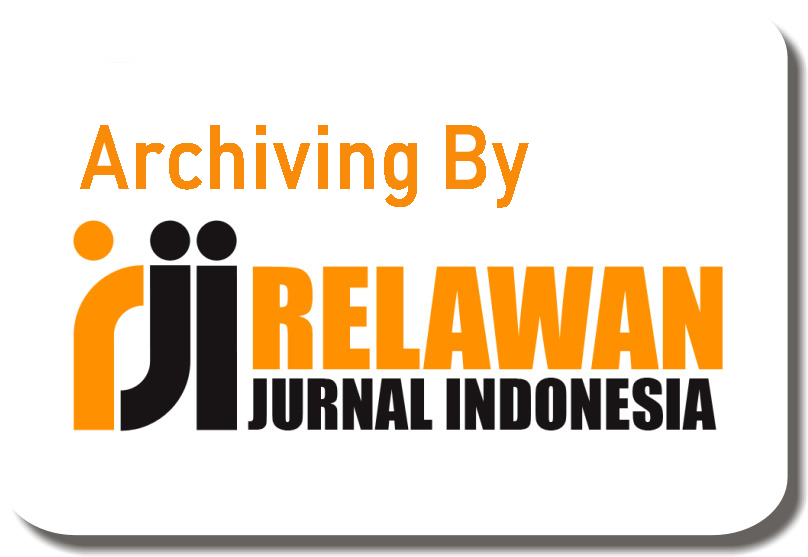Beyond the Screen: Student’s Voices on eLearning
Abstract
This study explores students’ perceptions of using eLearning technologies at SMAN 2 Tanjungpinang, aiming to understand the types of digital tools students use, their proficiency levels, and their attitudes toward integrating technology into learning. Using a quantitative descriptive method, data were gathered through a structured questionnaire distributed to 45 students. The survey focused on their use of devices, applications, and software related to eLearning, assessing both familiarity and confidence. Results indicate that while students generally view eLearning technologies positively—especially those that are user-friendly and accessible—their digital proficiency varies widely depending on the tool. Smartphones emerged as the most confidently used device, with 66.7% of students identifying as advanced users, likely due to their daily integration and ease of use. In contrast, only 6.8% reported advanced skills in using computers, and just 9.1% for tablets, suggesting a need for greater focus on these essential academic tools. Similarly, students demonstrated strong skills in general digital tools like search engines, but much lower proficiency with educational apps such as Duolingo and quizziz, where 62.2% were beginners. While platforms like TikTok, Instagram, and Google saw high user confidence, engagement with formal educational tools and productivity platforms was limited. These findings highlight a clear gap in academic digital literacy and emphasize the need for targeted digital education initiatives to better prepare students for technology-integrated learning environments.
Keywords
Full Text:
PDFReferences
Al-Fraihat, D., Joy, M., Masa'deh, R. E., & Sinclair, J. (2020). Evaluating E-learning systems success: An empirical study. Computers in human behavior, 102, 67-86.
Almaiah, M. A., Al-Khasawneh, A., & Althunibat, A. (2020). Exploring the critical challenges and factors influencing the e-learning system usage during COVID-19 pandemic. Education and Information Technologies, 25, 5261–5280.
Auxier, B., & Anderson, M. (2021). Social media use in 2021. Pew Research Center, 1(1), 1-4.
Banna, J., Lin, M. F. G., Stewart, M., & Fialkowski, M. K. (2015). Interaction matters: Strategies to promote engaged learning in an online introductory nutrition course. Journal of online learning and teaching/MERLOT, 11(2), 249.
Bao, W. (2020). COVID‐19 and online teaching in higher education: A case study of Peking University. Human behavior and emerging technologies, 2(2), 113-115.
Crawford, J., Butler-Henderson, K., Rudolph, J., Malkawi, B., Glowatz, M., Burton, R., ... & Lam, S. (2020). COVID-19: 20 countries’ higher education intra-period digital pedagogy responses. Journal of applied learning & teaching, 3(1), 1-20.
Dhawan, S. (2020). Online learning: A panacea in the time of COVID-19 crisis. Journal of educational technology systems, 49(1), 5-22.
Fauzan, F., Arifin, F., Lubis, M. A., & Firdaus, F. M. (2022). Lecturer's Digital Literacy Ability in the Pandemic. Cypriot Journal of Educational Sciences, 17(4), 1130-1142.
Gudmundsdottir, G. B., & Hatlevik, O. E. (2018). Newly qualified teachers’ professional digital competence: implications for teacher education. European Journal of Teacher Education, 41(2), 214-231.
Heil, J., & Ifenthaler, D. (2023). Online Assessment in Higher Education: A Systematic Review. Online Learning, 27(1), 187-218.
Helsper, E. J., & Eynon, R. (2013). Distinct skill pathways to digital engagement. European Journal of Communication, 28(6), 696-713.
Hilton III, J. (2016). Open educational resources and college textbook choices: A review of research on efficacy and perceptions. Educational technology research and development, 64(4), 573-590.
Hwang, G. J., & Tu, Y. F. (2021). Roles and research trends of artificial intelligence in mathematics education: A bibliometric mapping analysis and systematic review. Mathematics, 9(6), 584.
Iswanto, J., Afdal, T., & Afriani, W. (2024). Students’perception On The Use Of Zoom Meeting In Learning Pronunciation Using Song Lyric At The Twelfth Grade Of Sma Negeri 7 Tanjungpinang. Miftahul Ulum, 2(2), 34-39.
Liaw, S. S., & Huang, H. M. (2013). Perceived satisfaction, perceived usefulness and interactive learning environments as predictors to self-regulation in e-learning environments. Computers & education, 60(1), 14-24.
Martin, F., & Bolliger, D. U. (2018). Engagement matters: Student perceptions on the importance of engagement strategies in the online learning environment. Online learning, 22(1), 205-222.
Martin, F., Wang, C., & Sadaf, A. (2018). Student perception of helpfulness of facilitation strategies that enhance instructor presence, connectedness, engagement and learning in online courses. The Internet and Higher Education, 37, 52-65.
Means, B., Bakia, M., & Murphy, R. (2014). Learning online: What research tells us about whether, when and how. Routledge.
Reyad, S. M., Razzaque, A., Badawi, S., Hamdan, A., Khamis, R., & Al-Sartawi, A. (2019). The Impact of E-Learning on Learner Knowledge Sharing Quality. International Association for Development of the Information Society.
Riyanti, A., Sagena, U., Lestari, N. C., Pramono, S. A., & Al Haddar, G. (2023). Internet-based learning in improving student digital literacy. Cendikia: Media Jurnal Ilmiah Pendidikan, 13(4), 585-594.
Scherer, R., & Siddiq, F. (2019). The relation between students’ socioeconomic status and ICT literacy: Findings from a meta-analysis. Computers & Education, 138, 13-32.
Scherer, R., & Siddiq, F. (2019). The relation between students’ socioeconomic status and ICT literacy: Findings from a meta-analysis. Computers & Education, 138, 13-32.
Singh, V., & Thurman, A. (2019). How many ways can we define online learning? A systematic literature review of definitions of online learning (1988-2018). American journal of distance education, 33(4), 289-306.
Van Deursen, A. J., & Van Dijk, J. A. (2014). The digital divide shifts to differences in usage. New media & society, 16(3), 507-526.
Van Deursen, A. J., & Van Dijk, J. A. (2019). The first-level digital divide shifts from inequalities in physical access to inequalities in material access. New media & society, 21(2), 354-375.
Van Laar, E., Van Deursen, A. J., Van Dijk, J. A., & De Haan, J. (2017). The relation between 21st-century skills and digital skills: A systematic literature review. Computers in human behavior, 72, 577-588.
Yakubu, N., & Dasuki, S. (2018). Assessing eLearning systems success in Nigeria: An application of the DeLone and McLean information systems success model. Journal of Information Technology Education: Research, 17, 183-203.
DOI: https://doi.org/10.31004/jele.v%25vi%25i.1468
Refbacks
- There are currently no refbacks.
Copyright (c) 2025 Siti Nurhaliza, Diva Ramadhani, Yulia Efnawati

This work is licensed under a Creative Commons Attribution-ShareAlike 4.0 International License.



